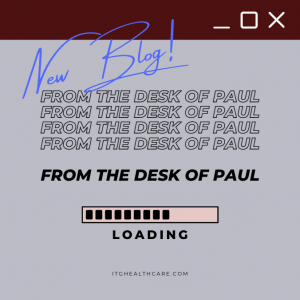From the Desk of Paul:
Many financial experts would agree that the balance sheet is one of the most primary indicators of a company’s financial health. The balance sheet equation is Assets = Liabilities + Equity. Not to over-simplify this, but for a minute, think of it way: a primary component of “assets” is cash. A primary component of “liabilities” is debt. Primary components of “equity” is what you, as the business owner, can choose to take out of the company for yourself or leave in the company as retained earnings. Rearranging the equation using algebraic principles has allowed me to better understand the balance sheet. Assets – Liabilities = Equity. Simply stated, if the amount of cash is less than the debt, then you may find yourself in a negative equity position, which can endanger the longevity of the business.
This pandemic has caused most of us to use more cash-on-hand than normal to support normal operations, while the inflow of cash has slowed down. The liabilities (vendor payments, credit card debt and long-term loans) still must be paid. If there is not enough cash-on-hand or inflow of cash to pay the liabilities then the company will have to use some equity to maintain operations, which puts an incredible amount of stress on the longevity of the company.
The pandemic we have endured is just one of several causes of such issues. Some other major events that can cause similar issues are an economic down-turn, high employee turnover, changes in regulations or compliance that negatively impact a company’s ability to provide products or services, just to name a few.
So, what to do? Start now by reviewing your company’s cash position. Many would suggest that because payroll is almost always one of the biggest expenses, you should reduce staff. I disagree, in most cases. Reducing staff will only temporarily help in many cases. Once revenue generation opportunities return to normal, you may not have enough staff to seize the available opportunities, then that business will go to your competition, making them even stronger while your company continues to flounder. Find other ways to reduce expenses and generate revenue (more on this next month), but more than anything, if you are able to do it now, begin reducing debt. There is a healthy balance between cash-flow and debt and it is different for almost every company. If you can’t figure out what that healthy balance is, invest in an expert who can. Using all of your cash to pay down debt can be a slippery slope if cash flow slows down even more. When cash-on-hand and cash flow is good, pay down some debt, but keep enough cash to cover several months’ worth of expenses. Think of this as saving what you need for a rainy day (or several rainy months!) and pay down debt with the excess. Doing so will better prepare your company for the next unexpected disaster!
As always, if you have questions or comments that you would like for me to address, please contact me at pmeadows@itgroupva.com
Paul Meadows,
President/CEO








